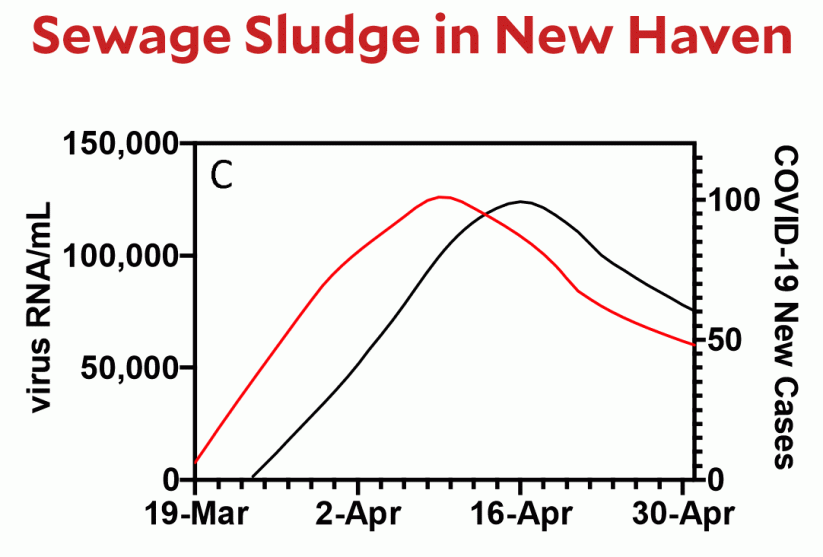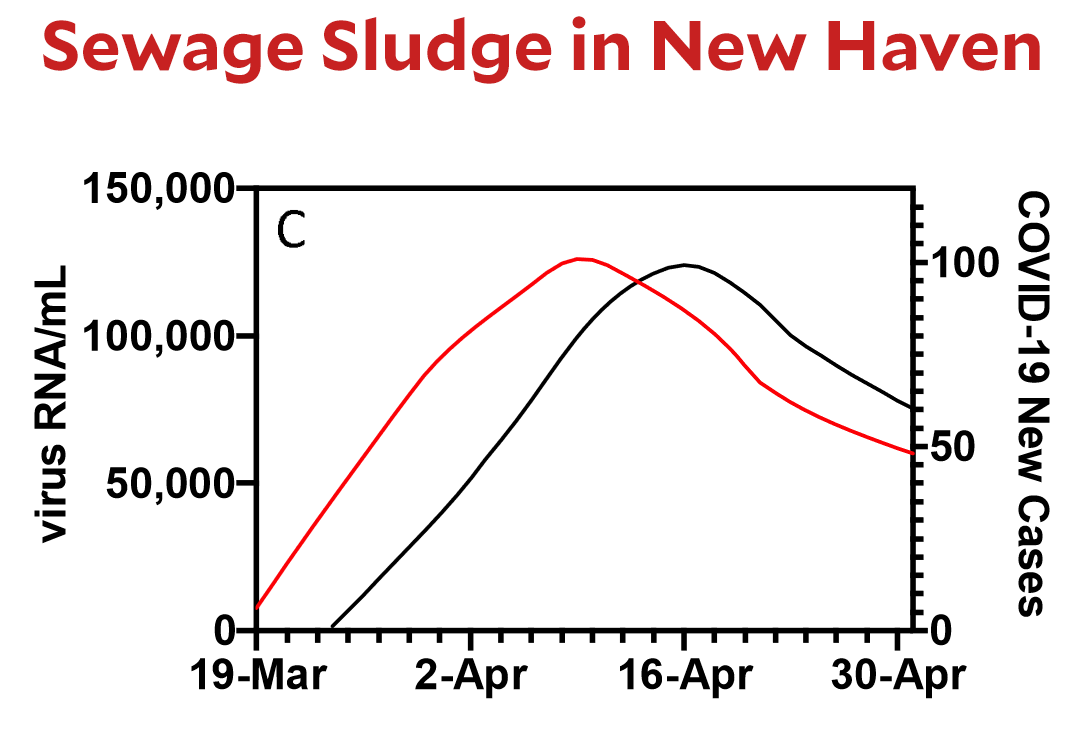
Last year I wrote about how the testing of sewage sludge in Flint could shed light on the evolution of lead levels in its water. But it turns out that sewage sludge can do more: you can test the sludge for coronavirus too. A team of Yale researchers did this in New Haven and came up with this:

The red line shows the concentration of coronavirus in sewage sludge. The black line shows the number of new COVID-19 cases. It’s a perfect fit with a lag of about one week.
It’s not clear how useful this result is, but anything that gives an early warning of coronavirus infections allows public health officials a head start on countermeasures. It won’t stop the spike in cases, but it might reduce the length of the spike if countermeasures are put in place a week earlier than they otherwise would.















